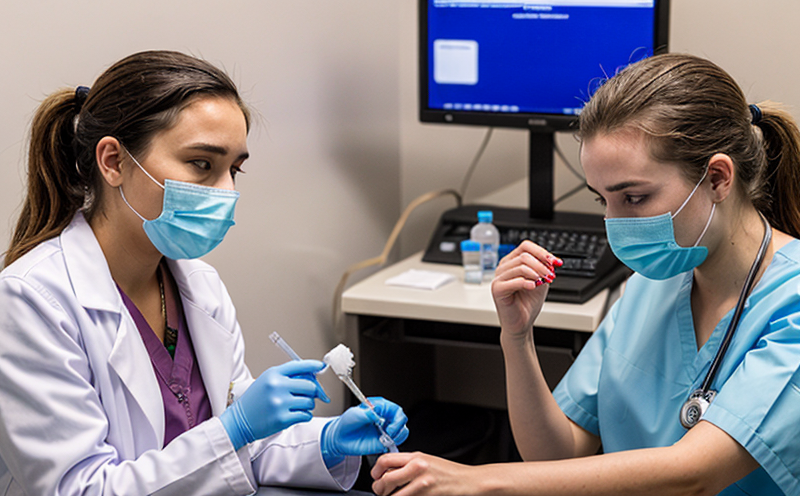CLSI M07 Dilution Susceptibility Testing for Bacteria
The CLSI (formerly known as NCCLS) M07 document provides standardized methods for performing dilution susceptibility testing on bacteria. This service is essential in healthcare settings, particularly in hospitals and clinics, to determine the appropriate antibiotic therapy for patients with bacterial infections.
Dilution susceptibility testing involves growing a culture of bacteria in a medium containing progressively lower concentrations of an antimicrobial agent until growth is no longer observed. The lowest concentration that inhibits visible growth defines the minimum inhibitory concentration (MIC).
The CLSI M07 protocol specifies precise methods to ensure consistent and reliable results, which are critical for accurate clinical decision-making. This standardized approach helps minimize variability among laboratories, ensuring that healthcare providers can trust the test outcomes.
Understanding the nuances of this testing method is crucial for quality managers and compliance officers working in microbiology labs. The protocol details include specific media types, antimicrobial agents, incubation times, and interpretation criteria. Adherence to these guidelines ensures that the results are comparable across different facilities.
R&D engineers benefit from this service by ensuring that new diagnostic tools and methods align with established standards. This consistency is vital for validating novel approaches in microbiology testing. For procurement teams, understanding the CLSI M07 protocol helps them select reliable suppliers of reagents and equipment necessary for performing these tests.
The process begins with aseptically preparing the bacterial culture according to the CLSI guidelines. This step is critical as any contamination could lead to inaccurate results. Once prepared, the culture is diluted into broth containing various concentrations of the antimicrobial agent under evaluation. The cultures are then incubated for several hours.
The MIC is determined by visually assessing the growth in each well or tube. If no visible growth is observed at a particular concentration, that concentration is considered the MIC. This value is reported along with additional information such as the antimicrobial agent used and the dilution factor.
Interpretation of results can sometimes be challenging due to factors like bacterial resistance patterns, which have been increasing globally. The CLSI M07 protocol provides criteria for categorizing the susceptibility of bacteria based on MIC values. This helps healthcare providers select the most effective antimicrobial therapy, thereby improving patient outcomes.
The importance of this service cannot be overstated in managing infectious diseases. By providing reliable and consistent data, it supports evidence-based treatment protocols that are crucial for combating antibiotic resistance. It also aids in monitoring trends over time and adjusting treatment strategies accordingly.
In conclusion, CLSI M07 dilution susceptibility testing is a cornerstone of effective bacterial infection management. Its standardized approach ensures accurate and comparable results across different laboratories, supporting informed clinical decisions and contributing to better patient care.
Customer Impact and Satisfaction
- Enhanced Patient Outcomes: Reliable susceptibility testing leads to the most effective treatment options, reducing the duration of illness and preventing complications.
- Improved Diagnostic Precision: Standardized methods ensure consistent results that are crucial for accurate diagnoses.
International Acceptance and Recognition
- The CLSI M07 protocol is widely accepted in the United States, Europe, Asia, and other parts of the world due to its rigorous validation process.
- Many international standards organizations recognize the CLSI as a leading authority on microbiology testing methods.
Use Cases and Application Examples
| Use Case | Description |
|---|---|
| Antibiotic Susceptibility Testing | Determining the most effective antibiotic for a particular bacterial infection. |
| Monitoring Antibiotic Resistance Patterns | Tracking changes in resistance patterns over time to inform treatment strategies. |
| New Drug Development | Evaluating the efficacy of new antimicrobial agents before they are approved for clinical use. |
| Outbreak Investigations | Determining the causative agent and its susceptibility profile in an outbreak scenario. |





